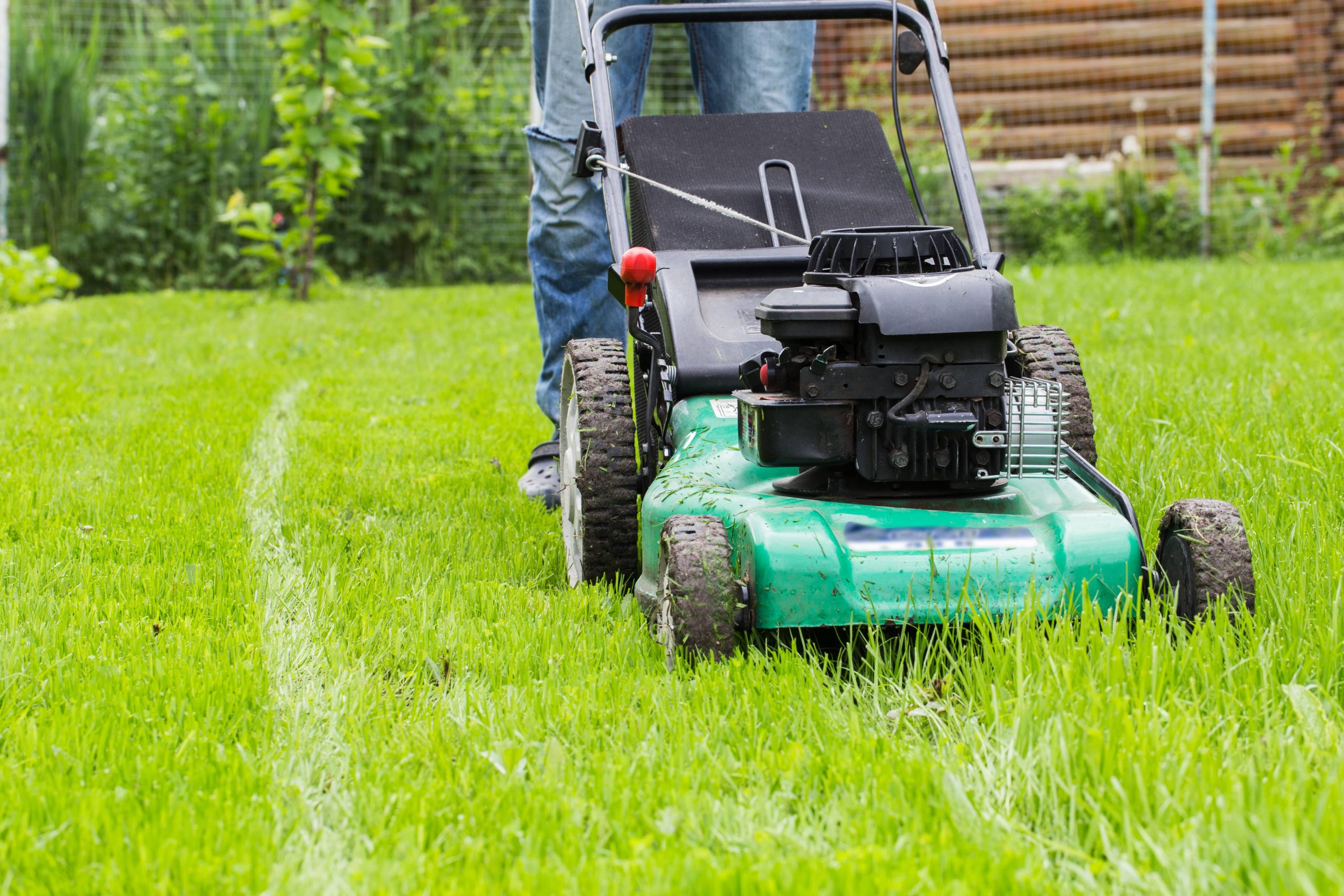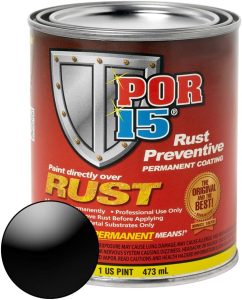If your lawn mower often starts and then cuts out, there are a number of reasons why this could be occurring.
In this guide, we’ve explained some common reasons why your lawn mower might be cutting out mid-mow.
We’ve ordered this list based on the order in which we would try each fix, and also how common each issue is.
1. Your mower is being overworked
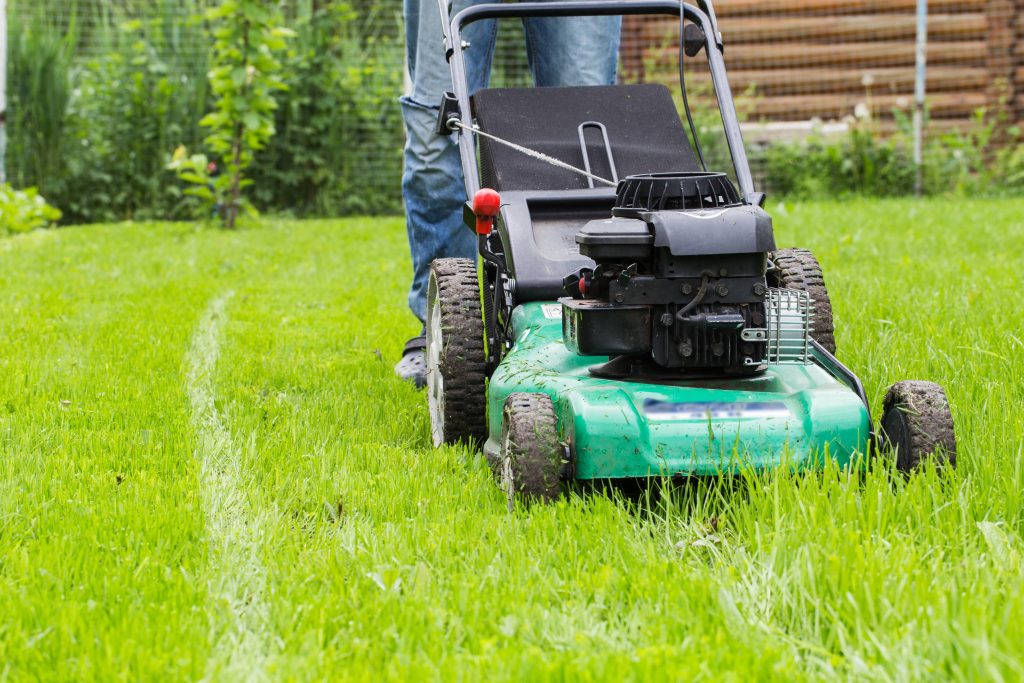
Most petrol lawn mowers have a safety feature where they cut out if the motor is being overworked, to prevent damage.
Your mower might be being overworked if:
- You’re mowing tall grass.
- You’re mowing very wet grass.
- Your mower blade is extremely blunt, and cannot cut through the grass effectively.
If your grass is very tall or thick, consider raising the cutting height, to reduce the strain on the mower. Likewise, if the grass is wet, try waiting until the weather dries out before mowing your lawn.
You can sometimes tell that your mower is being overworked from the sound of the engine. If the motor is giving off a higher-pitched tone, this can indicate that it is struggling slightly.
2. Your mower has debris clogging up the cutting deck
Similarly, your lawn mower’s engine might be under stress because the cutting deck is clogged up with grass clippings and other debris. This is especially likely to be the case when you mow wet grass.
To fix this issue, there are a few steps you can take:
- Give your cutting deck a really good clean, removing the blade, and using a wire brush and a pressure washer to remove any caked-on grass.
- Once your cutting deck is clean, apply a specialised lubricant to prevent grass clippings and dirt from sticking in the future. You can use WD-40, but it’s best to use a silicone cutting deck spray which won’t drip off onto your grass over time.
- (Optional) apply an anti-rust spray, for further protection, such as POR-15.
3. Your mower is using old petrol
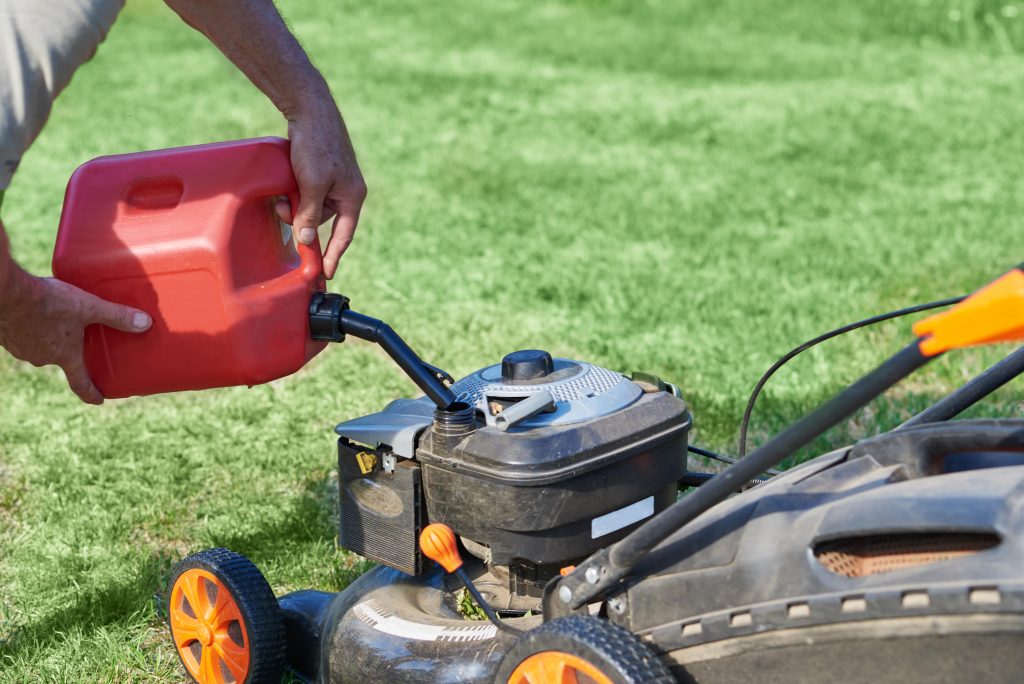
If you’ve just started using your lawn mower again at the end of winter, it’s possible that your fuel has gone stale.
Stale fuel can cause your mower to cut out, because the petrol no longer has the energy that it once contained. Even with a fuel stabiliser added, petrol cannot stay good indefinitely.
To fix this issue, you will need to completely drain your lawn mower of petrol, and re-fill it with fresh fuel. Ensure to avoid using E10 petrol if possible, as ethanol fuels can be harmful for your lawn mower in the long term.
4. Your spark plug is dirty
If you haven’t checked your spark plug in a while, chances are, it could be quite dirty, preventing it from doing its job properly – which is to ignite the petrol in your mower, and produce power.
Petrol lawn mowers come with a single spark plug, which can normally be accessed from under a cover at the front of the mower. You will need the right size socket wrench to remove the spark plug.
To clean your spark plug, use a brush combined with a degreaser or solvent – avoid using any significant amount of pressure, or soaking the spark plug in anything. Then, once you’ve completely wiped down the spark plug, you can put it back in your lawn mower.
5. Your spark plug is worn out
It’s also possible that rather than just being dirty, your spark plug is completely worn out, and needs replacing.
To tell if this is the case, look for extremely heavy carbon deposits, that are difficult to clean off, or for any damage to the electrodes at the tip of the spark plug.
Fortunately, spark plugs are very cheap in most cases, so it’s a good idea to replace your spark plug as a part of your lawn maintenance routine.
To replace a spark plug:
- Access your spark plug, and unplug the spark plug wire.
- Remove the spark plug using a socket wrench.
- Clean any deposits from around where the spark plug sits, using a wire brush and/or kitchen paper.
- Screw in the new spark plug, turning in a clockwise direction. You need to choose a spark plug with the same gap between the two electrodes at the tip as the spark plug you’re removing. You can either measure this distance using a spark plug gauge, or check your owner’s manual to see which type of spark plug to buy.
- Secure the spark plug using your socket wrench.
- Plug the spark plug wire back in.
- Replace the spark plug cap.
6. Your lawn mower is overfilled with oil
If your engine cutout issue is paired with your lawn mower billowing white smoke, it could be that your mower is overfilled with oil.
It’s a good idea to double-check your oil level, using your mower’s dipstick. Compare the level against what is recommended in your lawn mower’s manual.
If necessary, drain your oil a little bit, and check the level again, to ensure you don’t have too much in your oil tank. To drain the oil, you can normally pour it out of the hole where you add the oil – most petrol mowers don’t have drain plugs like a car does.
It’s also important to ensure that you have enough oil. Having too little oil could also cause your mower to cut out intermittently.
7. Your air filter is dirty
Apart from fuel, your lawn mower also needs a supply of clean air to produce power.
If you have a dirty air filter, then the airflow may be restricted, which can prevent your mower’s ignition system from working properly.
It’s a good idea to take out your lawn mower’s air filter from the side of your lawn mower and inspect it, to see how dirty it is. If it doesn’t look like the original colour (meaning, it’s gone very brown), then it can be a good idea to replace the air filter.
8. Your carburettor needs cleaning
If your lawn mower cuts out soon after being started, your carburettor or carburettor float chamber may be clogged up.
Cleaning your carburettor is an essential lawn mower maintenance item. To do this, you can spray the carb with specialised carburettor cleaner. You will also want to clean the various holes all around the carburettor.

This step does require a slight level of mechanical knowledge. You will need the ability to open up the mower, disconnect the fuel line, remove the carburettor, and replace its gasket when you put it back.
You may also like to replace the carburettor if it’s extremely clogged up. It’s recommended to replace your carb at least once every two years, provided your lawn mower is used fairly regularly.
9. You have a blocked fuel line
Mowers with a blocked fuel line often cut out intermittently as the flow of fuel to the engine increases and decreases intermittently.
You may experience a fuel line blockage due to sediments and other impurities in the fuel, which can lodge in fuel lines over time.
It’s also possible that you have a small fuel leak somewhere in your mower. This could be the case if you notice your mower smells of fuel (or burnt fuel) more than normal.
If you suspect you have a fuel line issue, it’s best to immediately stop using your mower, and either investigate the problem, or seek help from a mechanic. Fuel line issues can actually be quite dangerous, especially if the fuel lines are extremely old and are at risk of leaking.
10. Your lawn mower has an electronic issue
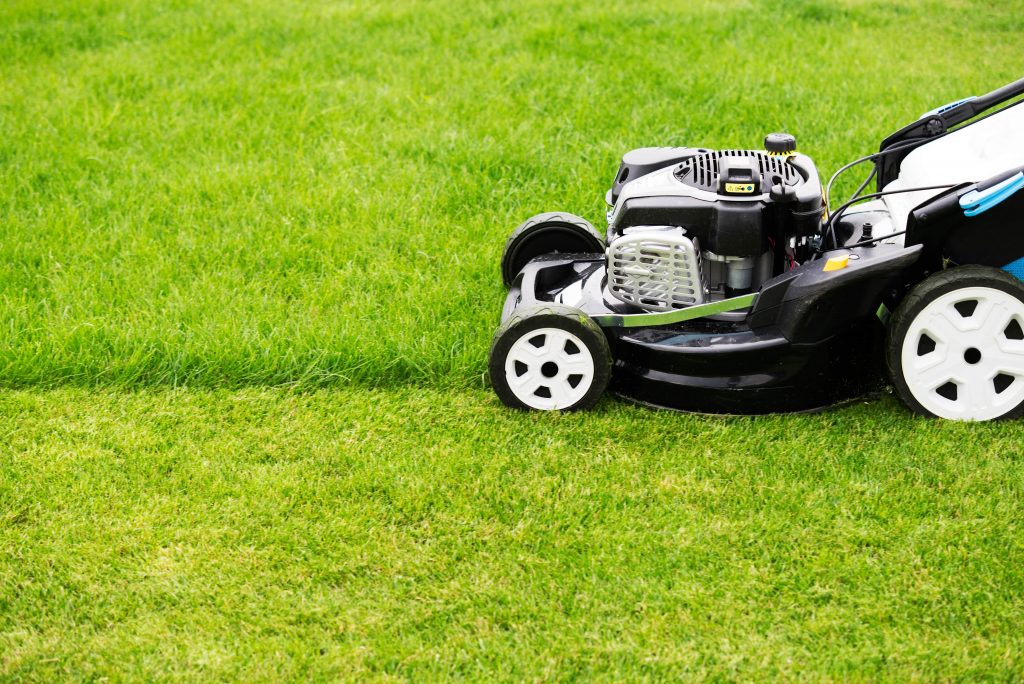
If you have exhausted all of the potential fixes we have explained above, it could be that your lawn mower has an electrical issue. This is more likely to be the case if you have a more expensive petrol mower with a starter motor and a battery.
Unfortunately, diagnosing electrical issues can be quite difficult. The issue could be as simple as a loose wire, or you could have a significantly more complex issue, depending on your lawn mower.
Typically, if you suspect an electrical issue, it’s best to seek professional help from a lawn mower mechanic if you’re not sure what the problem may be.
Conclusion
You’ve reached the end of our article explaining some potential reasons why your lawn mower starts then stops.
Hopefully you’ve been able to fix your mower, and stop it from cutting out randomly.
If you have any questions about fixing your lawn mower, feel free to leave them in the comments below.

I’m Josh, and I’m the head writer at Lawn Care Pro.
I love everything lawns, but I’m a bit of a lawn mower nerd. I spend a lot of my free time tinkering with mowers, and planning my mowing schedule for the next few weeks.
I’m also into cars, which comes in very helpful when servicing a mower engine!

